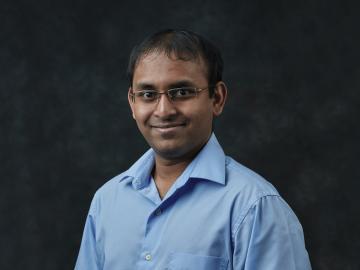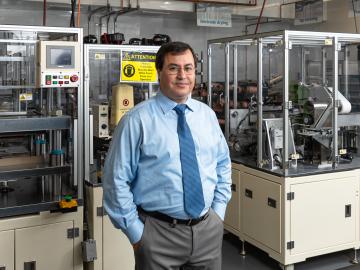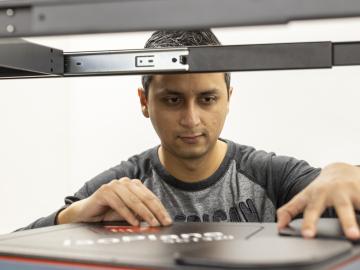
Filter News
Area of Research
News Type
News Topics
- (-) Artificial Intelligence (7)
- (-) Big Data (6)
- (-) Cybersecurity (3)
- (-) Energy Storage (14)
- (-) Grid (4)
- (-) Machine Learning (5)
- (-) Nuclear Energy (24)
- (-) Security (3)
- 3-D Printing/Advanced Manufacturing (24)
- Advanced Reactors (7)
- Bioenergy (13)
- Biology (3)
- Biomedical (16)
- Biotechnology (2)
- Buildings (1)
- Chemical Sciences (5)
- Clean Water (2)
- Composites (1)
- Computer Science (31)
- Coronavirus (22)
- Critical Materials (2)
- Environment (16)
- Exascale Computing (3)
- Fusion (10)
- High-Performance Computing (3)
- Isotopes (7)
- Materials (2)
- Materials Science (28)
- Mathematics (2)
- Mercury (1)
- Microscopy (6)
- Molten Salt (1)
- Nanotechnology (14)
- National Security (2)
- Neutron Science (29)
- Physics (13)
- Polymers (5)
- Quantum Science (12)
- Space Exploration (2)
- Summit (14)
- Transportation (10)
Media Contacts

For the second year in a row, a team from the Department of Energy’s Oak Ridge and Los Alamos national laboratories led a demonstration hosted by EPB, a community-based utility and telecommunications company serving Chattanooga, Tennessee.

Researchers at the Department of Energy’s Oak Ridge National Laboratory are refining their design of a 3D-printed nuclear reactor core, scaling up the additive manufacturing process necessary to build it, and developing methods

Suman Debnath, a researcher at ORNL, has been elevated to the grade of senior member of the Institute of Electrical and Electronics Engineers (IEEE).

Researchers at the Department of Energy’s Oak Ridge National Laboratory (ORNL) in late February demonstrated a 20-kilowatt bi-directional wireless charging system installed on a UPS medium-duty, plug-in hybrid electric delivery truck.

In the race to identify solutions to the COVID-19 pandemic, researchers at the Department of Energy’s Oak Ridge National Laboratory are joining the fight by applying expertise in computational science, advanced manufacturing, data science and neutron science.

As a teenager, Kat Royston had a lot of questions. Then an advanced-placement class in physics convinced her all the answers were out there.

Ilias Belharouak is leading ORNL’s research efforts in investigating new materials for solid-state batteries, which can double the charging capacity of lithium-ion batteries, commonly used today for electronic devices such as cell phones.

A software package, 10 years in the making, that can predict the behavior of nuclear reactors’ cores with stunning accuracy has been licensed commercially for the first time.

The techniques Theodore Biewer and his colleagues are using to measure whether plasma has the right conditions to create fusion have been around awhile.

We have a data problem. Humanity is now generating more data than it can handle; more sensors, smartphones, and devices of all types are coming online every day and contributing to the ever-growing global dataset.


